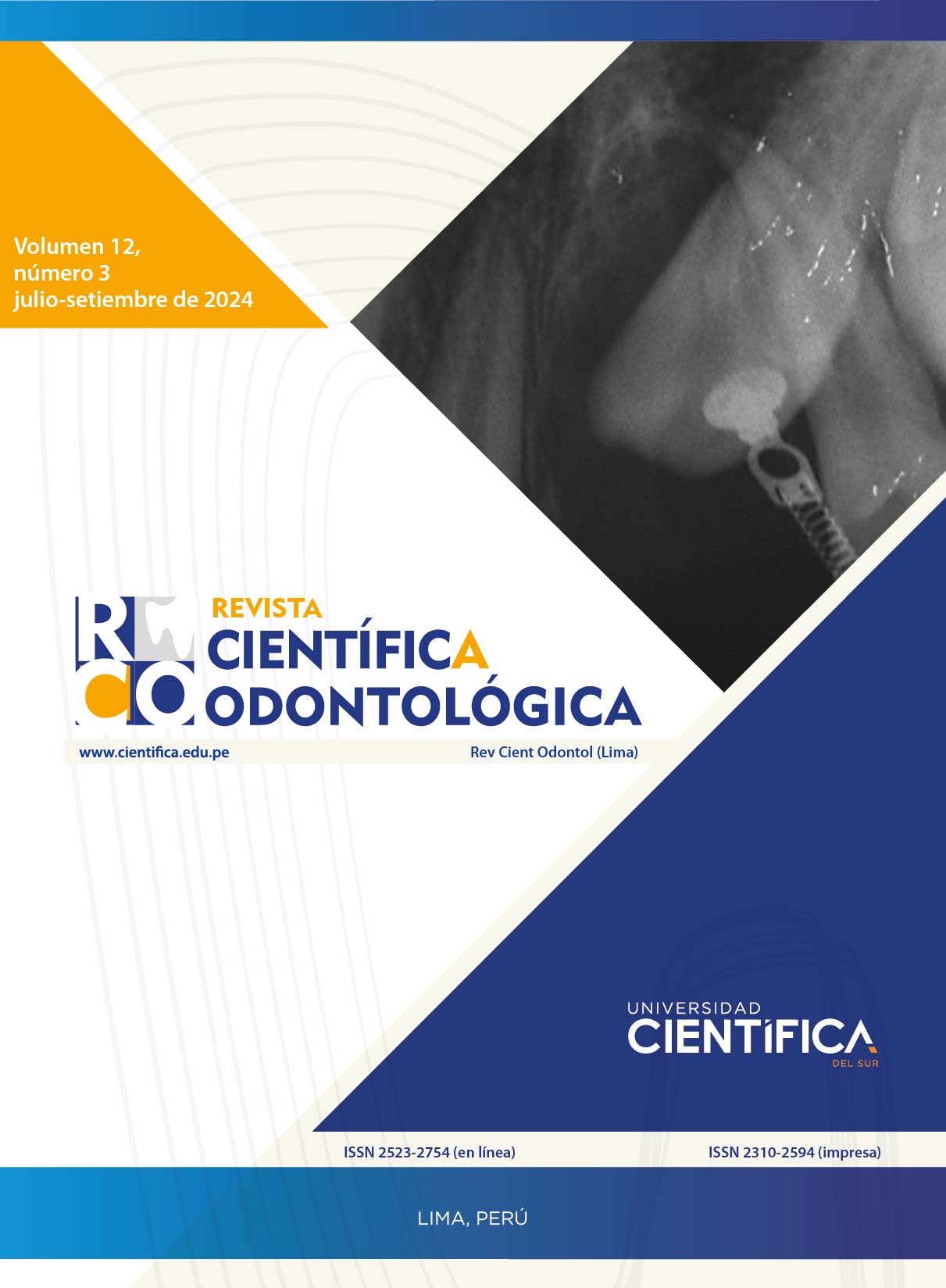Local administration of prostaglandins to accelerate the orthodontic movement. A literature review
DOI:
https://doi.org/10.21142/2523-2754-1203-2024-211Keywords:
prostaglandins, accelerated tooth movement, local administrationAbstract
Objective: The search to optimize tooth movement and reduce treatment time is of great interest to the orthodontist, as it involves innovating new materials and procedures to achieve the treatment objectives in the short term. The administration of prostaglandins has been studied, and their effect on accelerating tooth movement when administered locally has been proven. The objective of this study was to evaluate the latest achievements concerning the effects of local administration of prostaglandins to accelerate tooth movement for orthodontic purposes. Methodology: A search was conducted in four databases (PubMed, SciELO, Cochrane, Google Scholar) and three specialized journals (AJODO, Angle Orthodontics, Journal of Clinical Orthodontics) until August 2023. The methodological quality of the studies was analyzed using the PRISMA checklist. Results: The study had 14 articles. Local administration of prostaglandins accelerates the speed of tooth movement and increases the number of osteoclasts. Evidence of root resorption has been reported concerning high doses of prostaglandins via the submucosal route and a reduction in root resorption by administering prostaglandins with calcium gluconate. Local administration of prostaglandins via the submucosal route produces mild to moderate pain, and inoculation with a local anesthetic is recommended. However, oral administration of the analogous compound Misoprostol does not produce pain or evidence of root resorption. Conclusions: Sufficient scientific evidence has not been found to support the local administration of prostaglandins as a safe method to accelerate tooth movement in humans.
Downloads
Downloads
Published
Issue
Section
License

This work is licensed under a Creative Commons Attribution 4.0 International License.

Este obra está bajo una licencia de Creative Commons Reconocimiento 4.0 Internacional.












